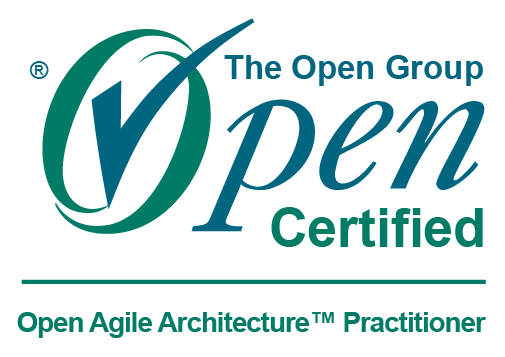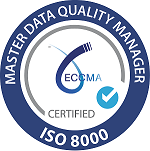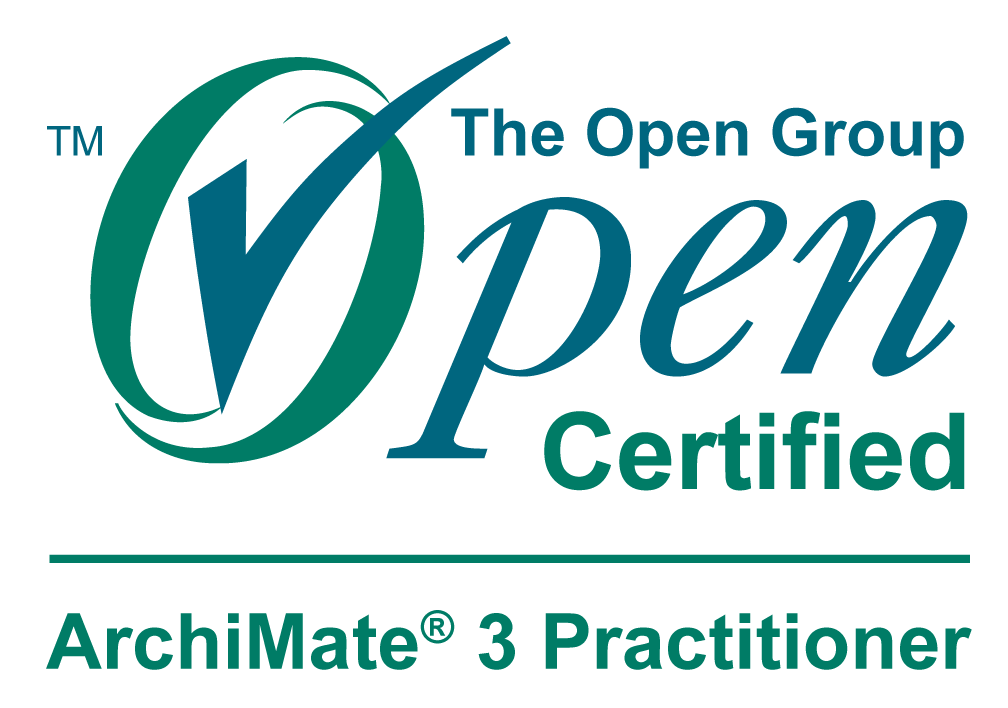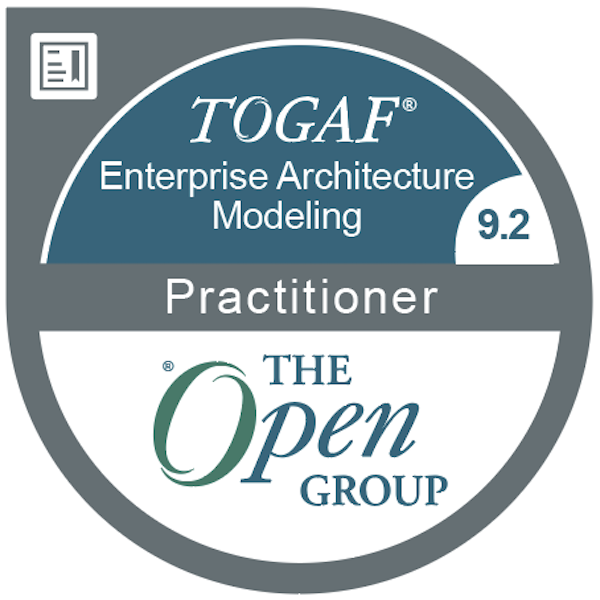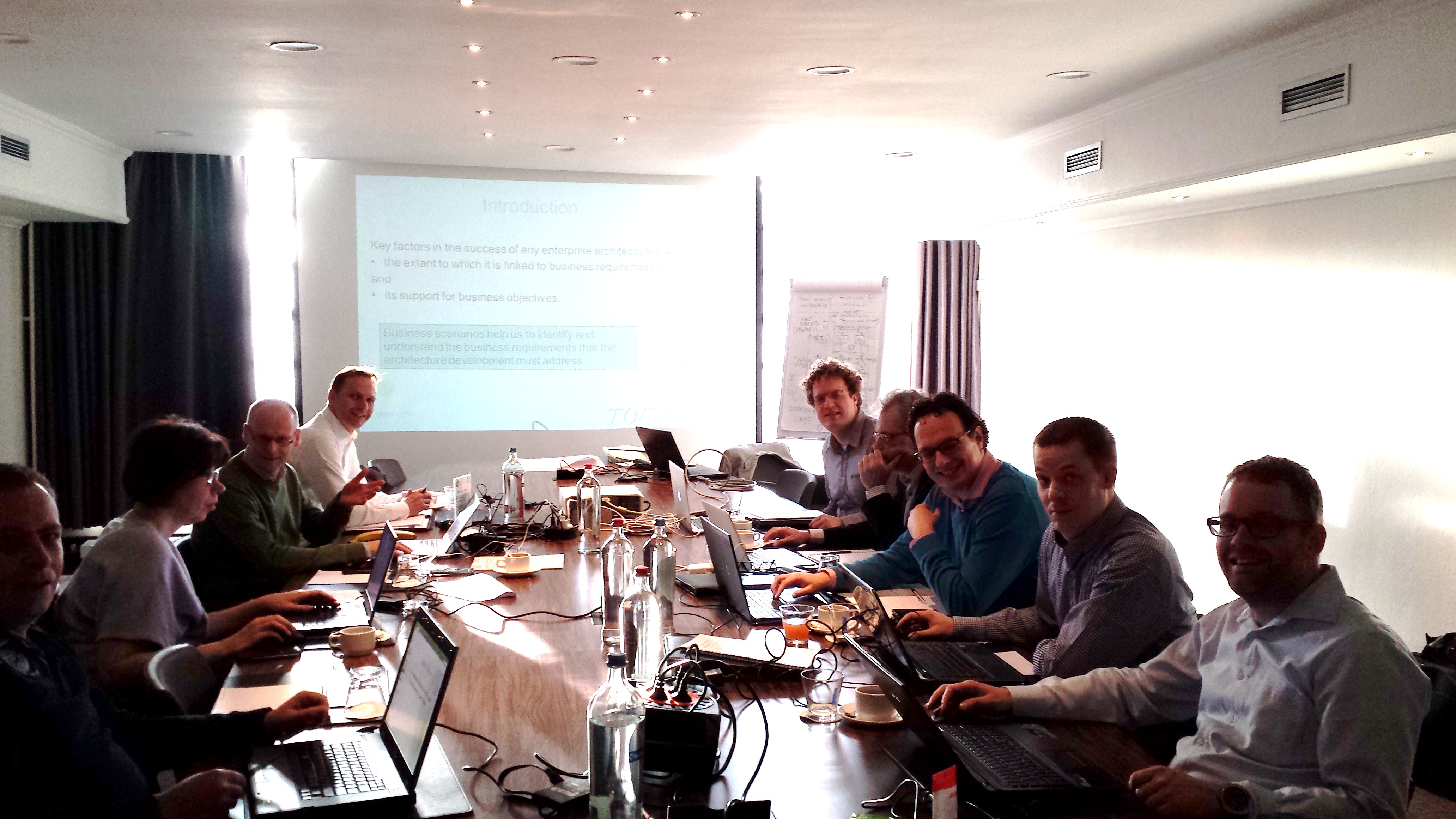Toward AI Enabled Data-Driven Agile and Digital Enterprise
Making the Agile Enterprise "Sense the Change" and "Act upon it Rapidly and Decisively"
The Open Group has recently issued the Open Agile Architecture (O-AA) standard that aims to create Value in an Agile way by aligning Products, Services and Operations of the Enterprise to its Strategies and Experience Design of Users and Customers.
O-AA (TM) defines the Agile and Digital Enterprise by the following statements :
"The Agile enterprise senses changes in its environment early and acts upon them decisively and rapidly".
"The Digital enterprise is about applying digital technology to adapt or change:
• The strategy of the enterprise, the product or service it markets,
• The experience it delivers to customers, employees and other stakeholders,
• Its operating system" - processes and assets.
To enable such an agile and digital alignment to deliver the best products and services, O-AA is centred around the concept of “Value” instead of ‘Requirement based features’ as depicted below.
The O-AA framework can efficiently be used to enable organizations to strategically create value through enhanced products and services then adjust them continuously based on feedbacks captured from different drivers such as customers, users, stakeholders and all other drivers.
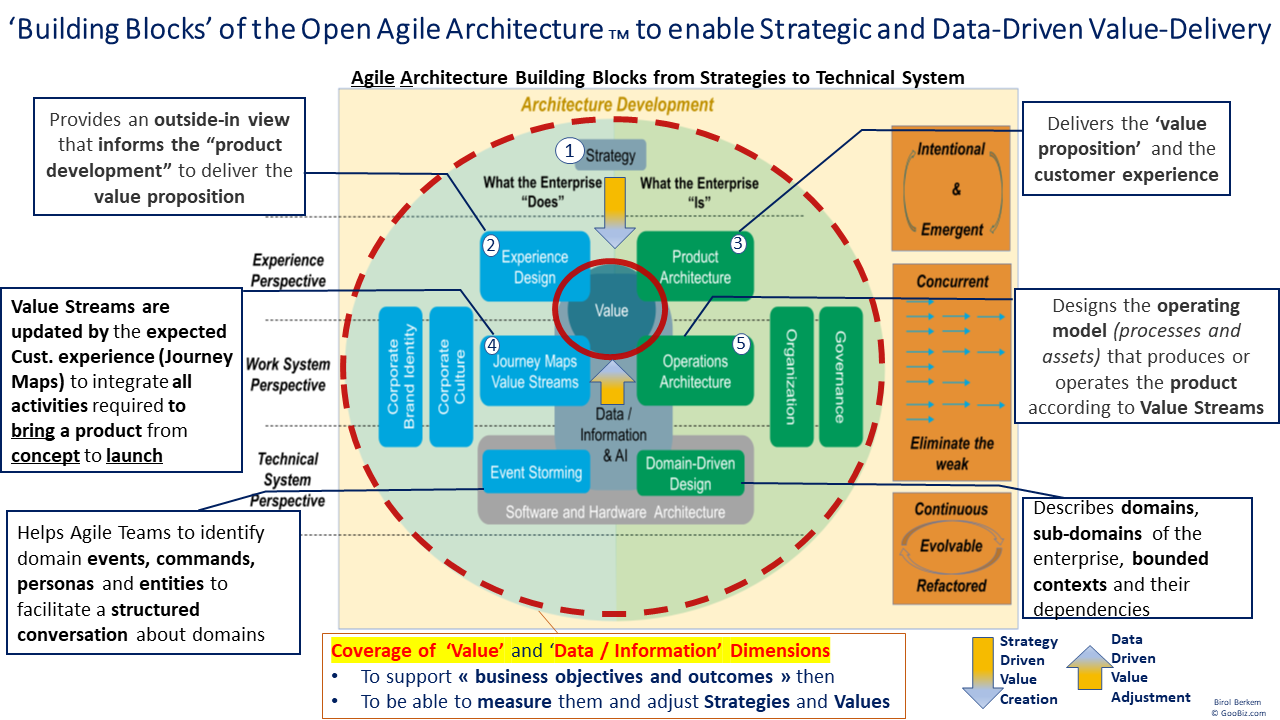
Figure 1 - The Building Blocks of the O-AA standard from Strategy (1), Experience Design (2), Product Architecture (3), Journey Maps (4), Operations Architecture (5) to Domain-Driven Design in the Technical System Perspective.
However O-AA does not provide any detailed explanation on how to sense the change and react upon it decisively and rapidly.
Indeed, to feed the "Strategy" building block with the right data to 'plan value creation and its delivery', we have just a bit extended in the above figure the boundary of 'Data' and Value' entities to cover the Strategy and other building blocks such as Organization and Governance (cf. dashed line in red in the figure).
This enables the Strategy-Driven Value Creation and Data-Driven Value Adjustment respectively materialized by two small arrows added to figure 1.
STRUCTURING THE AGILE and DIGITAL ENTREPRISE
To enable the "Agile and Digital Enterprise" using such a Strategic and Data-Driven Value Management approach, the corresponding building blocks need to be made actionable by establishing appropriate links among them using a modeling language such as ArchiMate through TOGAF ADM phases.
The figure below depicts on the left the TOGAF ADM cycle that implement O-AA building blocks through its phases. These phases will be used to structure the Agile Enterprise to "sense change in its environment early and acts upon them decisively".
Figure 2- From O-AA building blocks on the left to 'Sense Changing and Decisively Reacting Organization' framework depicted on the right corner through partitions of a Business Model Canvas (BMC).
A zoom on it is provided in Figure 3.
Please notice that the numbers provided on the below schema do not represent any sequencing ; they only make reference to O-AA Building Blocks located on the upper right corner.
ORCHESTRATING THE 'VALUE CREATION and DELIVERY'
To concretize the "Change Sensing and Decisively Reacting Agile Organization", a holistic approach supported by two bridges between Goal-Driven Values and the Business Model Canvas is revealed necessary as depicted on figure 3 below.
-STRATEGY-DRIVEN VALUE CREATION
This is the top-down bridge located on the top left of the figure that allows setting goals (# 1) and values on the basis of data collected from Drivers and the Customer Experience (#2) through the Value Proposition Canvas on the right.
The latter helps to assess consumer's gains and pains to refine Values that need to be delivered by products and services.
This bridge helps to configure the Product Architecture to realize these values (# 3), till the Customer Journey (# 4) that "assess the delivered value" being supported by processes, resources and touchpoints (small circles in blue) that enable Customer Interactions and Distribution Channels (# 5).
-DATA-DRIVEN VALUE ADJUSTMENT
The second bridge is symbolized by the bottom-up arrow and all internal arrows that join the 'data assessment " icon depicted on the top left.
This bridge allows collection of required data from all innovation dimensions including feed-backed data coming from steps of the Customer Journey to assist decision-makers with the adjustment of strategies and values.
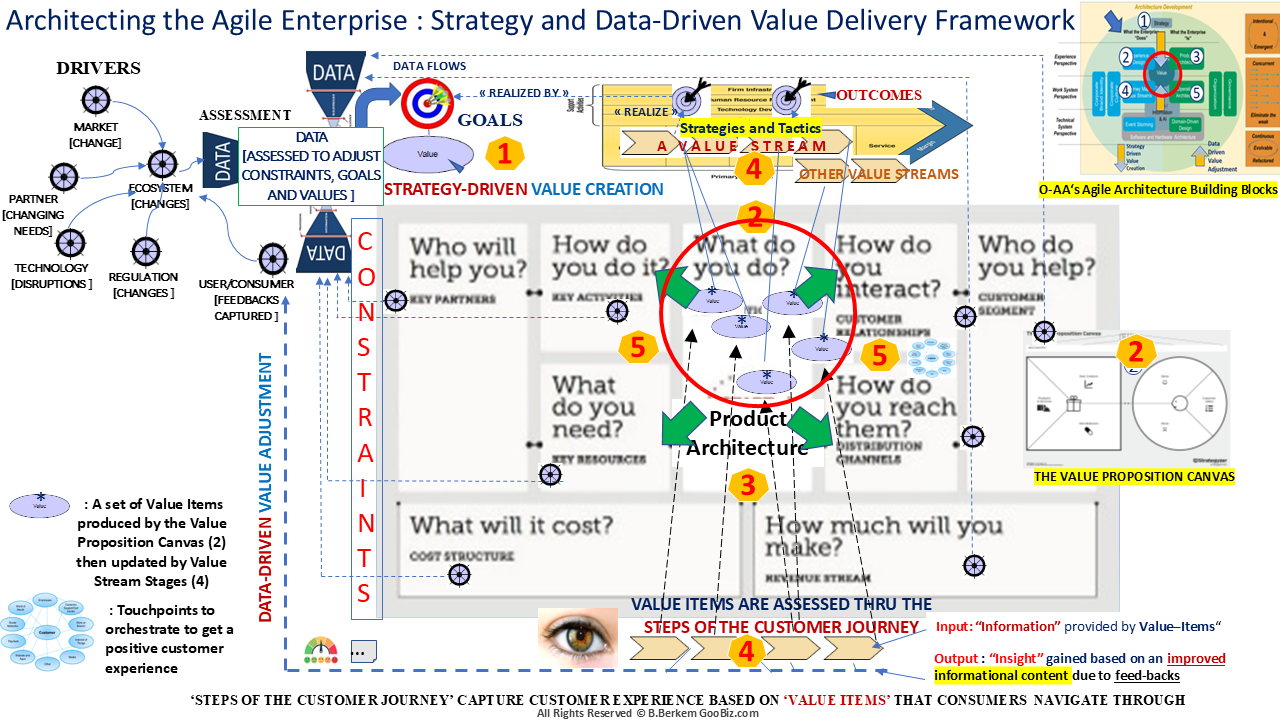

Figure 3 - A high-level visual description of O-AA Building Blocks to enable 'Strategic Value Creation' followed up by ' Data-Driven Value Adjustment' based on data captured from Drivers through Innovation Dimensions
Indeed, to enable the "Data-Driven Value Adjustment", data feedbacks need to be captured from all innovation dimensions (through innovation entities that are monitored in each partition of the Business Model Canvas - such as Key Activities, Resources on the left, Touchpoints and Distribution Channels on the right - being based on Value Items surrounded in the center of the figure.
BUSINESS AGILITY AND ORGANIZATION AGILITY
-Business agility is the ability to quickly identify and respond to market and environment changes.
-“Enterprises develop business agility when they sense changes in their environment early and act upon them decisively and rapidly”.
-Organizational Agility is required to support scaling beyond the pilot stage. In O-AA, addressing the organizational and soft aspects of Digital Transformation is a key success factor.
In this perspective, to become Agile, the organization must:
•- Shift from siloed work to interdisciplinary collaboration, because digital technology has the biggest impact when leveraged by cross-functional teams that are aligned on outcomes
•- Empower decentralized decision-making as business agility requires vigilant organizations capable of seeing risks and opportunities sooner and positioning themselves to act faster to address them.
These two roles of the Agile Organization are assigned respectively to autonomous Stream-Aligned Teams and Competency Teams in the O-AA's Agile Teams Taxonomy as explained in figure 3.1 below.
To enable the Agile Organization, Agile Governance in O-AA uses the four levers below to align autonomous teams:
•L1 - Shared purpose, defined as “an organization’s strategic and philosophical vision that may include “hard” business goals such as revenue and profits as well as “broad brush” visionary objectives that appeal to the heart”
•L2 - Shared consciousness, as “sharing a fundamental, holistic understanding of the operating environment of our own organization while also preserving each team’s distinct skill sets”
•L3 - Forcing functions (or guardrails), as a set of “guidelines, restrictions, requirements, or commitments (principles) that “force”, or direct, a desirable outcome - such as security standards, data standards, GPRD, … without having to manage all the details of making it happen”
•L4 - Feedback loops that help to adjust the behaviour of autonomous teams
In the Agile Organization of O-AA, Stream-Aligned Agile Teams are aligned to Outcomes. They are supported by Competency Teams that are experts in some business or technical areas as indicated below.
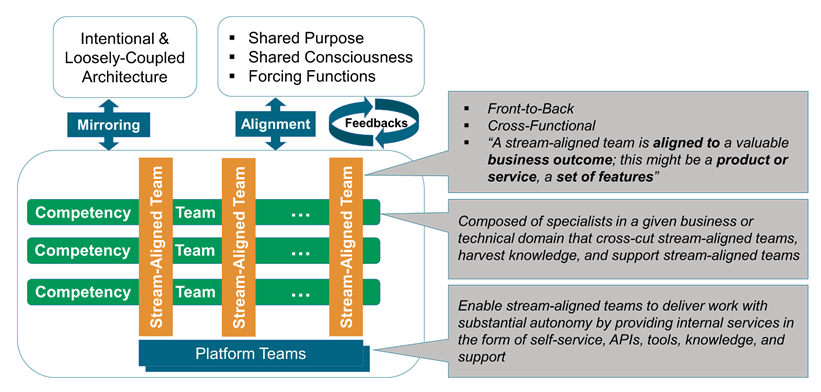
Figure 3.1 - O-AA's Agile Organization Teams Taxonomy : Stream-Aligned Teams are directly responsible for delivering products or journeys - they are assisted by Competency Teams
Using such an expertise, competency teams are able to assess changes captured on the innovation dimensions (see below) to make related decisions being guided by the 'outcome' of each 'Stream-Aligned Team' they support.
The below schema makes reference to a survey provided by McKinsey about the Agile Organization as a living organism: https://mck.co/2nfsgAg
Its "Fit-for-purpose performance cells" depicted on the left and annotated in blue with O-AA terms can indeed be implemented by the Open Agile Architecture's "Change Sensing and Rapidly Reacting Agile Teams".
In this perspective, the roles of cross-functional teams as depicted on the right are as follows:
1. 'Stream Aligned Teams' show the directions and enable actions to deliver Value Aligned Products and Customer Journeys.
2. 'Competency Teams' are accountable to sense the change in the environment(s) (cf. 'innovation dimensions' below) assigned to them and react upon it being aligned to Value-Items to be delivered by Stream-Aligned Teams.
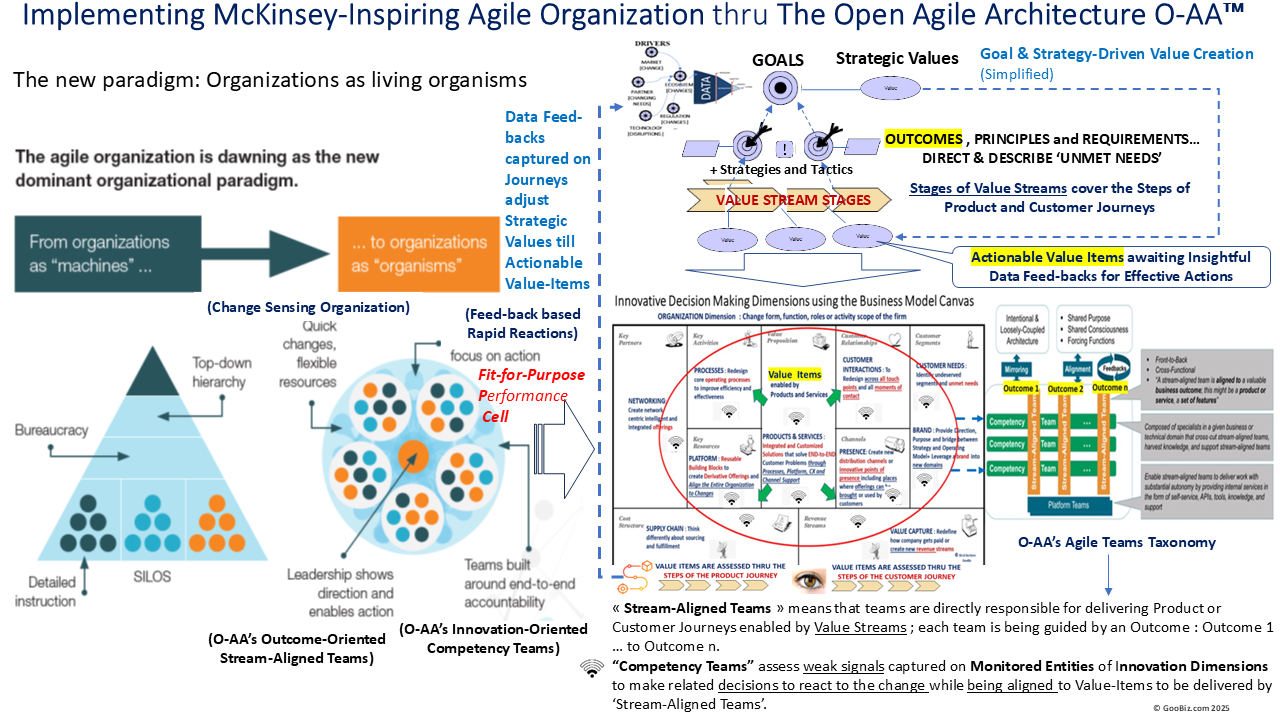
Figure 3.2- “Competency Teams” assigned to Innovation Entities become accountable to monitor changes captured on innovation dimensions being guided by the Outcomes of 'Stream-Aligned Teams'
ARCHITECTING THE STRATEGIC and DATA-DRIVEN ORGANIZATION
To enable the Strategic and Data-Driven Organization using O-AA's Agile Architecture Building Blocks, a set of minimal #archimate artifacts are presented below inside each #togaf 10 ADM Phases.
Our aim here is only to focusing on the necessary actions in each ADM Phase to enable Agility through traceability links between O-AA's concerns.
Preliminary Phase (P) : Define the Enterprise within its disruptive environment based on Drivers and assessments, goal settings, value propositions to evolve the organization into digital product offerings and the customer journey mapping for its delivery (cf. below)

Figure 4 - ArchiMate's Business Motivation Elements used to describe the O-AA "Strategy" Building Block in the ADM's Preliminary Phase
The High-Level Value shown on the right will be used to define in Phase A the 'Job-to-be-done' i.e. "what customers will do with the product they buy".
Then it will be decomposed into Value-Items and Services on the basis of customer gains and pains.
On the basis of Outcomes, the organization of Agile 'Fit-for-Purpose Performance Teams' is started here as depicted in figure 3.2.
This will be complemented with Competency Teams's accountability assignment based on Value-Items discovered in Phase A.
Phase A : Develop a high-level vision of the business value and capabilities to be delivered by the Enterprise Architecture using Motivation models to determine for example what value-items concretized by corresponding services of the product should be offered to customers on the basis of their gains and pains.
Then how to enhance customer's perception of the worth of these services using Strategic Models (such as Value Stream and Courses of Actions).
As shown in the above figure, one of the important artifacts elaborated in phase A is the definition of the target 'Value Proposition Canvas' depicted on the right side.

Figure 4.1 - The Value Proposition Canvas with its compartments used to describe and refine the Product based on Customer's gains and pains
Indeed, the Value Proposition Canvas may be described using ArchiMate elements to determine Value Items and Services that need to be offered on the basis of gains and pains of users/customers during the realization of their job-to-be-done.
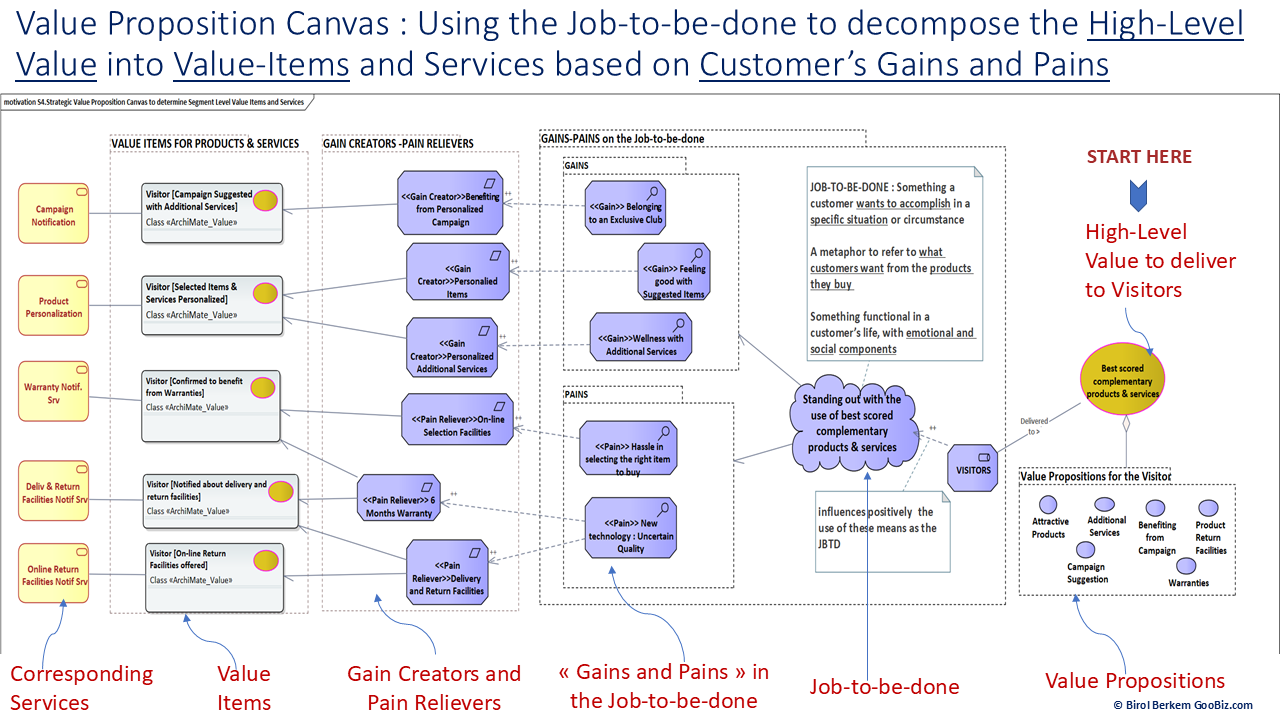
Figure 4.2 - Discovering Value-Items and Services based on High-Level Values to deliver and Customer's Gains and Pains
Now, to enhance customer's perception of the worth of the Product we need to accurately determine in which step of the Product and Customer Journey (CJ) these Value-Items should be offered.
To do this, we need to consider desired effects on user/customer roles being based on the Steps of their Customer Journey (cf. fig. below).
As in O-AA, "Strategy" is considered as "a set of assumptions that need to be experimentally verified", we express such effects on roles by formulating them as "monitored entities” in desired states“.
Such a formulation helps us to gradually check where we are in achieving Strategic Objectives and Key Results (OKRs) on these roles.
Phases A and B :
In phases A and B of the ADM, iteratively, we make use of 'Outcome Aligned Strategies' (#1 in figure below) to resequence Value-Items that were determined in phase A depending on the Steps of their Customer Journey.
This helps to configure Stages of Value Streams to enhance customer's perception of the worth of the Product and services (the latter will be designed in details through ADM phases C and D).
The figure below outlines an example of such an end-to-end alignment of Value-Items to Roles inside the Steps of the Customer Journey.
.png)
Figure 5.1 - The Intentional Architecture - from Strategic Outcomes to Steps of the Customer Journey where Value Items
are aligned to Roles
Roles depicted in the bottom part of the figure will also be used in the description of User Stories to deliver the corresponding Values at run-time (cf. figure 6 in Phase G).
To concretize 'Information Elements' that are needed to be conveyed to Roles then getting their feedback as 'Insightful Data' to adjust the value delivery, we use the ISO/IEC 2382 definition for Information Elements as explained below.
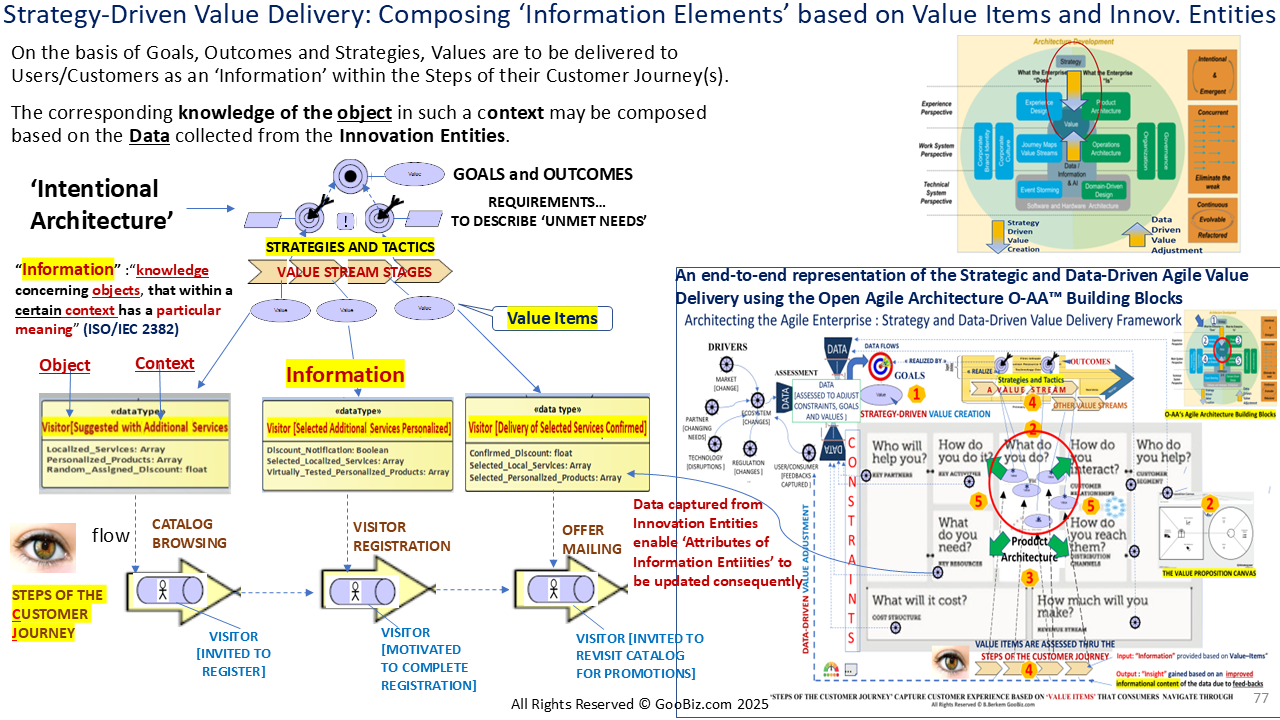
Figure 5.2 - Concretizing 'Information Entities' to get feed-back from Drivers such as the 'Steps of Customer Journey' on a Value basis
Segmenting Stream-Aligned Agile Teams
In its Axiom 12 - 'Organization Mirroring Architecture', O-AA stipulates that the "Agile Architecture shall structure Agile teams in a way that maps the system’s intentional architecture".
This is about shaping the enterprise’s organization in a way that mirrors its intentional product and software architectures.
In this perspective, the figure below represents the Intentional Architecture aligned to the goal 'Turning Visitors into buyers' till its service boundaries.
Two complementary consumer segments helps to prepare these service segmentations. These are segments of Unregistered Visitor and Registered Visitor.
The corresponding segment boundaries are assigned to Outcome-driven Marketing Support and Sales Support Stream-Aligned Agile Teams respectively dedicated to Outcome 1 and Outcome 2
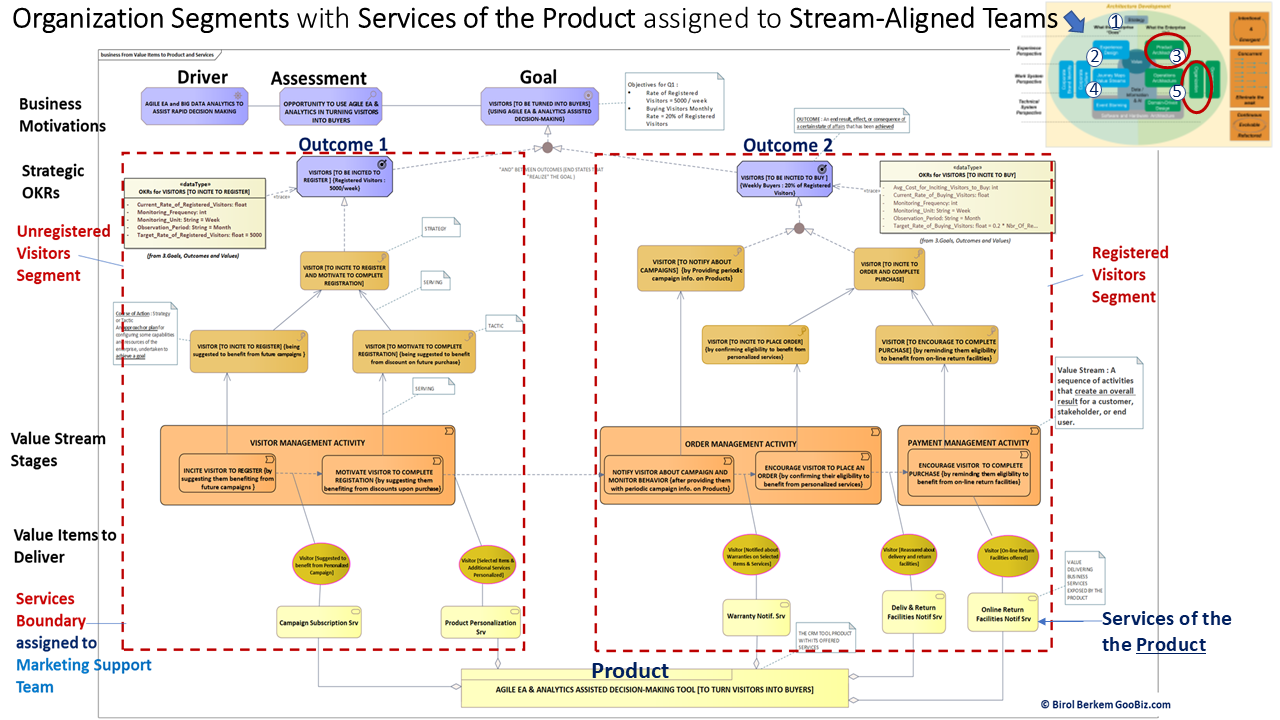
Figure 5.3 - Assignment of Organization Segment boundaries to Stream-Aligned Teams on a small example
Phases B to F : Develop the Architecture
Develop the Product and Service Architectures that are produced and operated by the Operation Architecture based on Strategic Capabilities directed by ‘Stages of Value Streams’.
In this perspective, the ArchiMate layered view ensures mapping of functional elements to technological and physical ones as depicted below.
Figure 5.4 - From Business to Technology Layer Artifacts aligned to describe the Architecture Building Blocks of the Product
Phases E to G :Software Bounded Contexts and Measure of Performance
In Phases E and F, increments of Capability and their assigned Resources (of Product and Operations Architectures) are planned to support continuously enhanced incremental delivery.
Being guided by the Phase G (Implementation Governance), the corresponding software is developed, tested and deployed.
In this technical perspective, the Open Agile Architecture standard makes reference to the 'Software Bounded Context' concept imported from the Domain-Driven Design as summarized below.
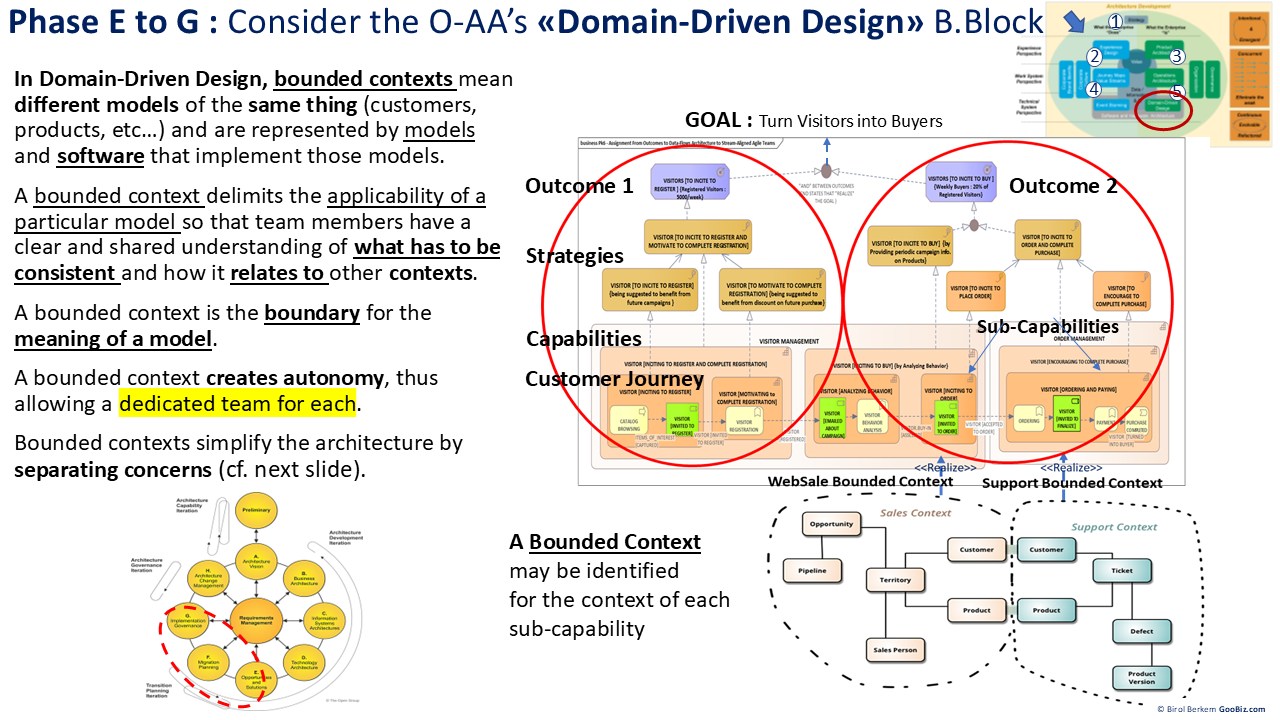
Figure 5.5 - Two 'Bounded Contexts' realizing each a separate sub-capability (cf. next figure for details)
Software entities and relationships within 'bounded contexts' as well as their attributes can be precisely discovered on the basis of capabilities and data that need to flow within and between processes.
In addition, such attribute values at run-time help to measure progress throughout end-to-end processes that realize the value streams.
The figure below depicts some of these contextual entities with their attributes discovered being based on the context brought by the corresponding data flows within capabilities depicted above.
The Sales Engagement and Sales Support bounded contexts provide a set of business entities and their relationships to incite visitors to buy then encourage them to complete their purchase being aligned with Outcome 2 : Visitor [To Incite to buy].
These bounded contexts might be assigned to dedicated Stream-Aligned teams such as Sale Engagement team 1 to 'Incite Visitor to buy' and Sale Support team 2 to 'Encouraging Visitor to Complete Purchase'. Our objective here is to reduce dependencies of teams for a better team interoperability.
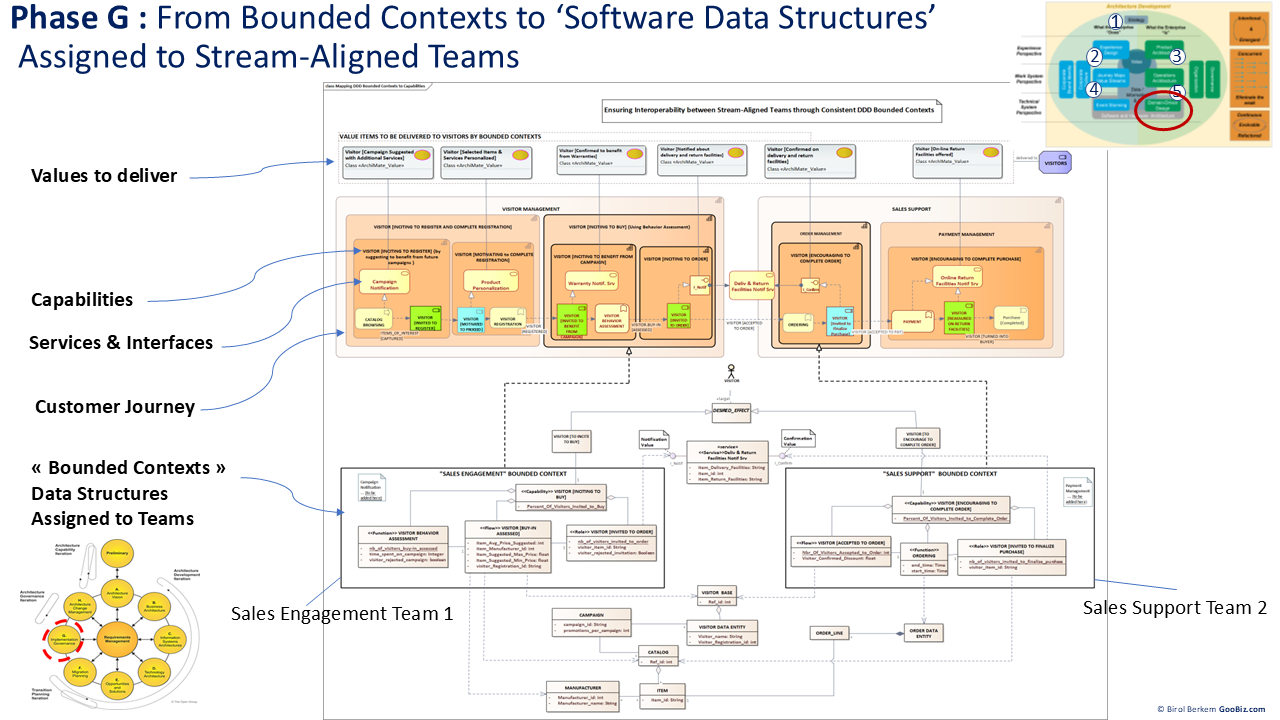
Figure 5.6 - Context-Driven Realization of Values by two 'Bounded Contexts' with their Software Data Structures on a simplified example
Identifying "High Value User Stories" that make the bridge between Strategy Aligned Roles and 'Values' to be delivered
Services of the Product Architecture have to be developed in Phase G of the ADM.
To do this, the Operational Context within which "User Stories" have to deliver corresponding 'Values' must be defined..
In this perspective, run time 'Information' that need to be delivered to Consumers as a "Value-Item" at each Step of the Customer Journey (CJ) is described using State-Based Data-Types (represented here by UML types in yellow on the top of the figure below).
Thus, by "pushing" instances of such data-types to consumer human machine interfaces (HMI) in the corresponding Steps of the CJ, one can capture corresponding consumer feed-backs to enhance the Value Delivery (cf. Phase H).
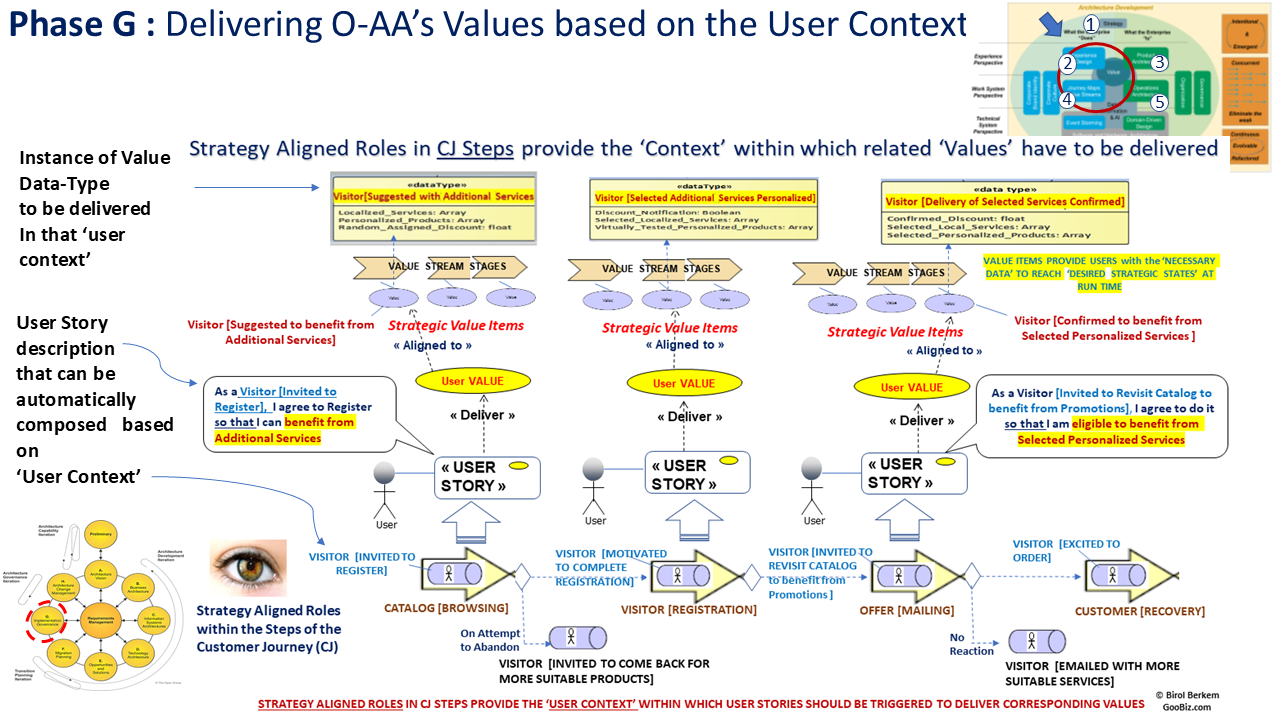
Figure 6 - Making the bridge from Strategy Aligned Roles of the Customer Journey to Value Items that are delivered through 'Strategy Aligned User Stories'
Phase H : Manage the Change
Change is managed through 'OKR based Data Feedbacks' captured at runtime from all drivers.
As initially depicted in figure 3, data feedbacks captured from drivers (regulations, partner requirements, customer journey, claims, IoT based data, etc...) at run-time are assessed to adjust strategies and values.
In this perspective, the figure 7.1 below shows the four steps within which feed-backs captured from CJ Steps might be assessed by 'Actionable Desired Effect Structures' that were awaiting such data in order to be activated.
In the example at the top level of the figure, in # 0, once Data Attributes (*) for top level ‘Strategic Elements’ are set according to « desired effects », they are made ‘Actionable’, i.e they start to ‘await data’ to feed these data attributes to assist with appropriate decision-making and consistent top-down strategy execution.
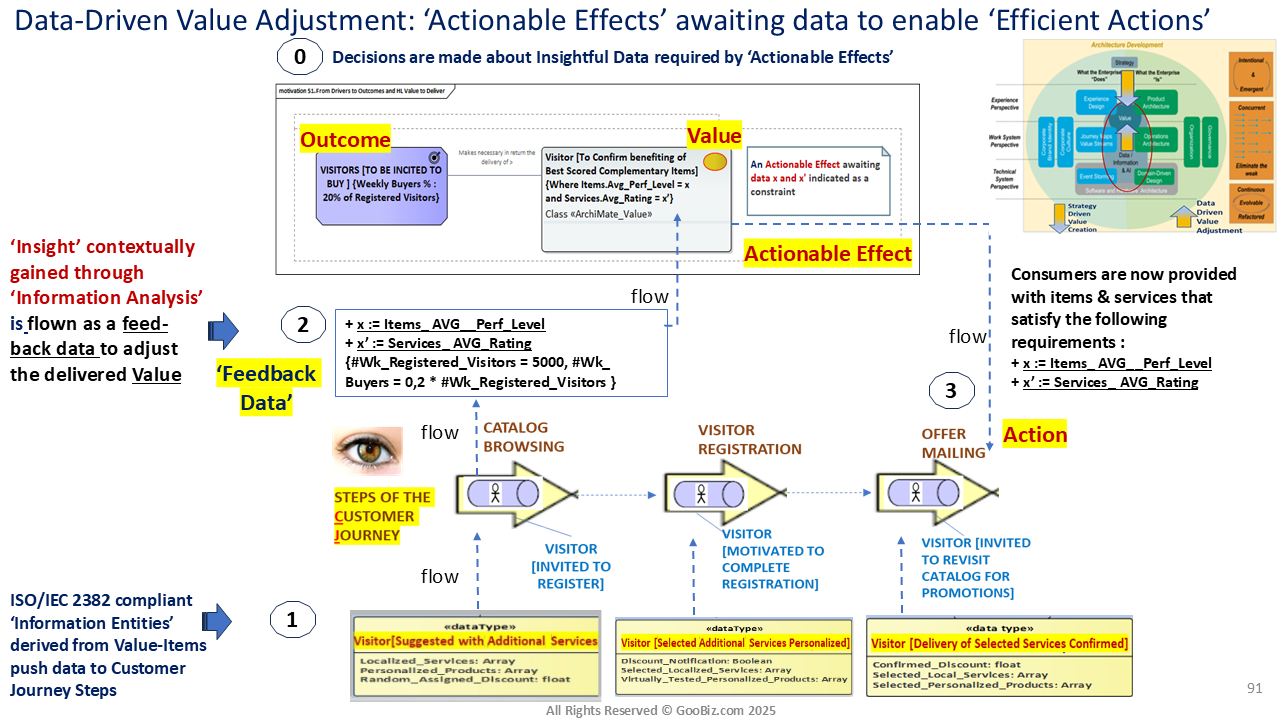
Figure 7.1. Feed-backs received from the Steps of the Customer-Journey provide Insightful data that are used to update constraints imposed to an 'Actionable Effect' to drive Efficient Actions
In this perspective, figure 7.2 depicts the big image where data needed by Items.AVG_Perf_Level and Services.AVG_Rating of the 'Actionable Effect' are captured through the Catalog Browsing process (in #1).
These data are respectively provided as an average data feed-back to Personalized Products and Localized Services data brought by the data type depicted on the bottom left corner.
Finally, acquiring such a data permits to activate the Actionable Effect Visitor [To Confirm benefiting of best scored Items] by creating a link between occurences of Visitor and Catalog Items that respect such a condition in the corresponding database.
This helps to provide Visitors with items that better satisfy their expectations before inviting them to order at the process level (#3).
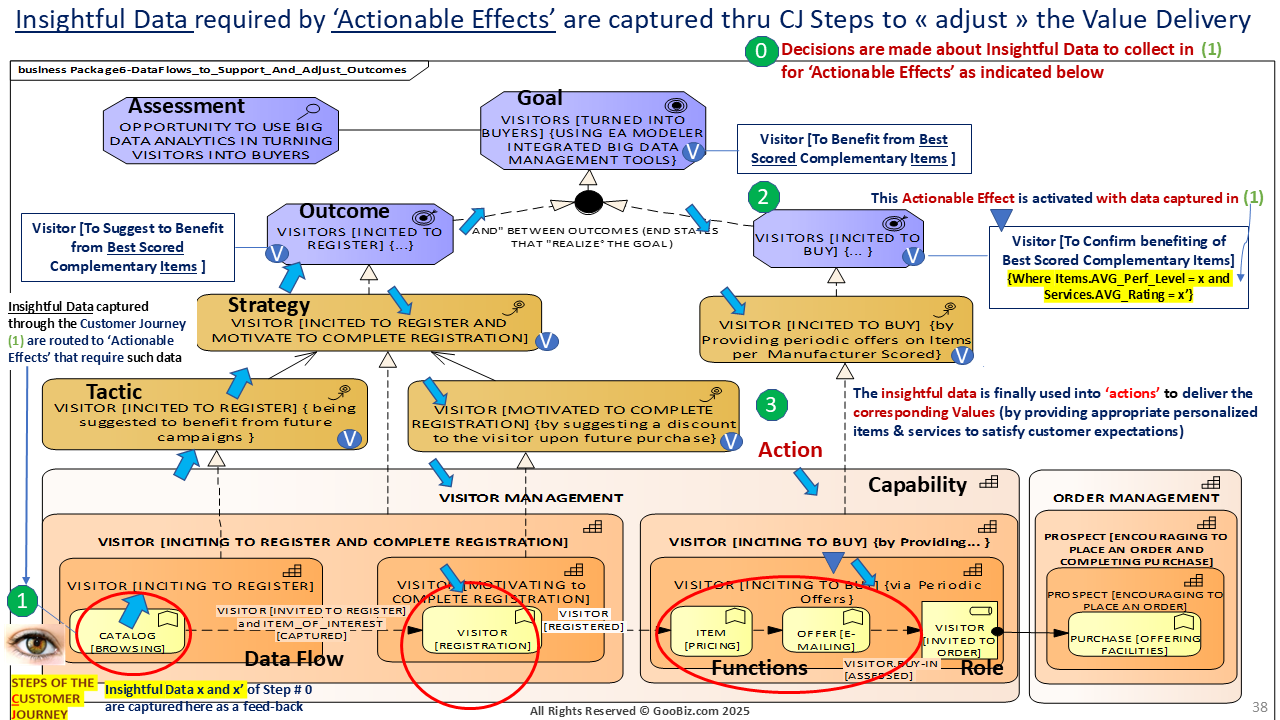
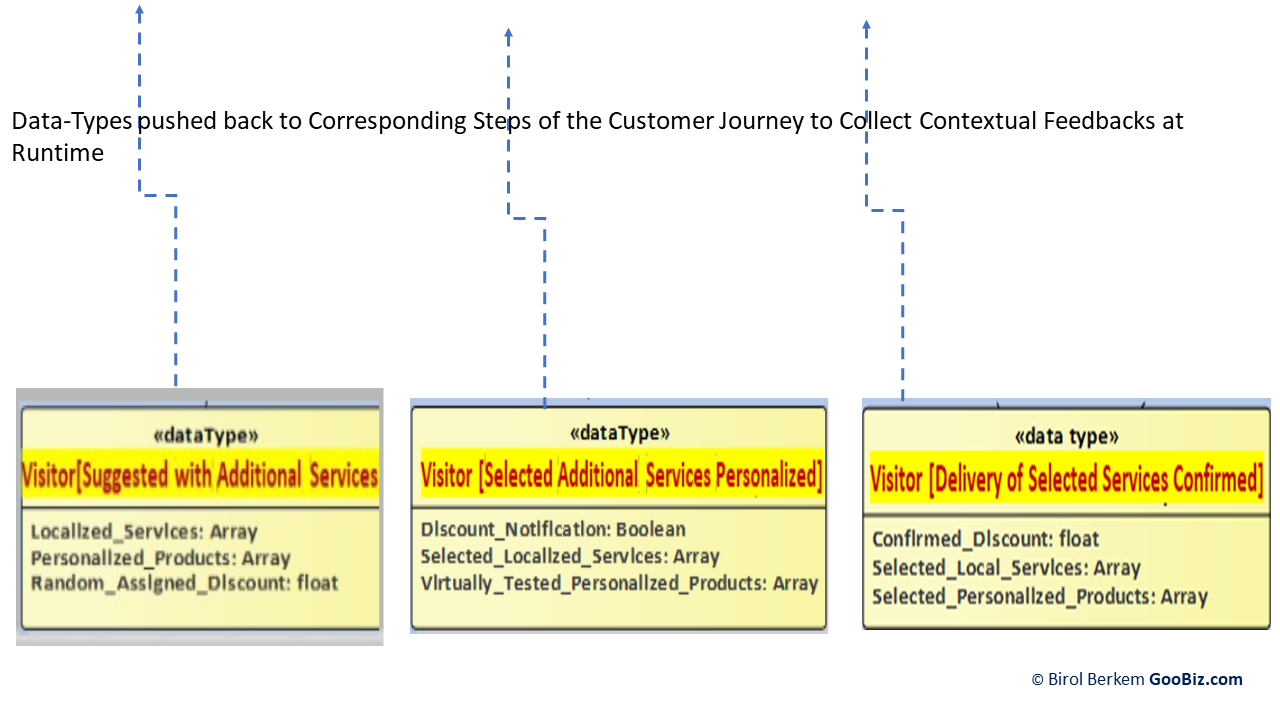
Figure 7.2 - To assist with decision-making about Actionable Effects in (# 0), the following feed-back data Items.AVG_Perf_Level (x) and Services.AVG_Rating (x') that are required are first captured from the Steps of the Customer Journey in (# 1) at run time then routed to activate the Effect in (# 2) to finally configuring actions of operational processes with these data in (# 3)
SUMMARY
As a recap, the figure below shows a set of ArchiMate artifacts that can be used to enable O-AA's Strategic and Data-Driven Value Delivery.
Each artifact is presented by the "identifier" of the corresponding ADM phase in which it is first introduced.
While O-AA's Strategy-Driven Value Creation (cf.figure 1) is to be conducted from TOGAF ADM's Preliminary Phase (P) to Phase G, the Data-Driven Value Adjustment focuses more on Phase H based on state-based data feedbacks that are captured through Steps of the Customer-Journey.
Figure 8 - Essential Artifacts to support Strategic and Data-Driven Value-Delivery through TOGAF ADM Phases - from Preliminary Phase (P) to Phase H
The figure below gives an overall presentation of the O-AA concerns whose building blocks are to be implemented by TOGAF's ADM Cycle and Data-Driven Strategic Value-Delivery mechanism is to be enabled by ML/RL (Reinforcement Learning) to enable Rapid & Decisive Reactions to captured change.
.
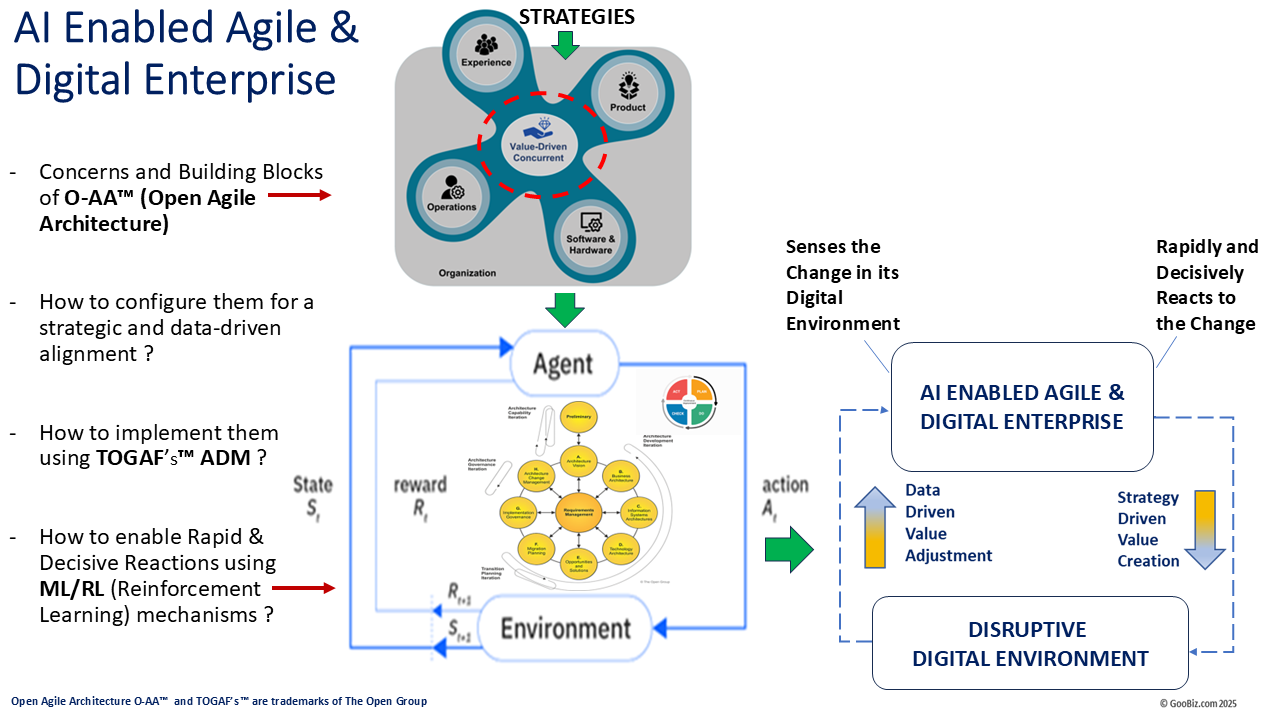
Once traceability links are established from confirmed Strategies in TOGAF ADM's Phase A till their software implementation (Phase G) as depicted in figure 5.6, agent(s) allocated to deliver Value-Items - cf. figure 5.2 are triggered by their orchestrator.
In this perspective, agents get state change from Drivers such as Steps of Product Journeys (PJ) or Steps of Customer Journeys (CJ), etc... and react to them by sending the right value to their environment in the respect of constraints imposed by other drivers such as Regulations.
For instance, whenever a user is connected to the journey (PJ or CJ) step, an instance of the corresponding agent is notified and reacts by sending to the user the 'Value Item' that corresponds to the current process-step.
The scenario continues on the basis of rewards that the agent receives step by step as a state-based feedback from the user until accomplishing the corresponding process...
The above excerpts are taken from our Open Agile Architecture (O-AA) and TOGAF training courses.
Descriptions of these training courses with hands-on can respectively be found on :
For O-AA using TOGAF and Reinforcement Learning : https://goobiz.com/Open_Agile_Architecture_Training_(O_AA).htm
For TOGAF including Agile Delivery using O-AA building blocks:
https://goobiz.com/TOGAF-Enterprise-Architecture-Foundation_Exam_Preparation.html
Useful References :
[Brent Dykes 2016] "Actionable Insights: The Missing Link Between Data And Business Value "
[O-AA 2021] :Value-Driven Agile Approach
https://pubs.opengroup.org/architecture/o-aa-standard/architecture-development.html
https://pubs.opengroup.org/architecture/o-aa-standard/bb-overview.html
Birol Berkem, Ph.D - GooBiz - Paris, last updated 2025 November 7th.
#businessmodelinnovation #valuecreation #digitaltransformation

This work is licensed under a Creative Commons Attribution-ShareAlike 4.0 International License.
